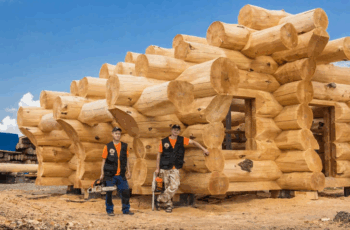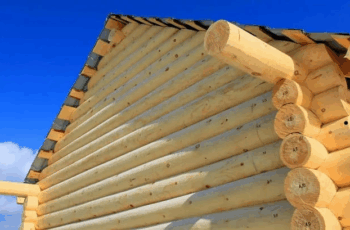
Living in a cabin comes with all the charm you’d expect—creaky floors, that sweet smell of pine, birdsong in the morning. But let’s be real for a second. The one thing that can sneak in and ruin all of that faster than you’d think? Moisture. It doesn’t matter how strong your logs are or how well your roof is built, if you let moisture hang around, it’s only a matter of time before problems pop up. Mold, rot, swelling wood, strange smells—it’s a whole mess. But the good news is you don’t have to become a contractor to stay ahead of it.
It all starts with understanding where moisture comes from. In a cabin, it’s not just about rain. Sure, storms play a role, but you’ve also got to think about humidity in the air, condensation from cooking and showers, wet ground outside, even snow melt dripping down in spring. Sometimes it’s the stuff you can’t even see that causes the most trouble. That’s why prevention isn’t just about patching up a leak. It’s about setting your place up right from the get-go—or fixing the setup if it’s already off.
One of the smartest moves you can make is managing airflow. Sounds boring, but it’s huge. Stale air traps moisture, and when it has nowhere to go, it sinks into the wood. Make sure your place has decent ventilation. That means vented attics, crawlspaces that don’t feel like a swamp, windows that open and get used. Ceiling fans help too, especially when the air’s still and heavy. If your cabin feels muggy or the windows fog up a lot, chances are you’ve got a moisture issue just waiting to grow legs.
Another key piece is drainage. Water should always be flowing away from your home, not pooling around it. So look at your gutters—are they clean? Are the downspouts pointing far enough from the house? Is your yard sloped so water runs away instead of toward your foundation? These sound like small things, but they matter. A blocked gutter can cause water to spill over and soak your logs, and you might not even notice until you see green stuff growing where it shouldn’t.
Don’t forget about what’s under your feet. Cabins built over crawlspaces or low basements are especially prone to humidity problems. If the ground’s always damp, that air rises into your living space. Vapor barriers can help a ton—just a heavy plastic sheet between the soil and your floor framing to block moisture. If you’ve got a crawlspace that smells musty or feels damp, chances are it’s overdue for one.
Inside the cabin, watch out for daily habits that add moisture. Showers with no exhaust fan, drying clothes indoors, boiling water for hours on end—these can all build up humidity. It’s not about changing your life, just being smart about it. Use fans. Crack windows when you cook. Keep a window open a sliver when running the fireplace. A little air exchange can go a long way, especially in tighter spaces.
Your logs need protection too. If they’re not properly sealed or stained, they’ll soak up water like a sponge. Once that happens, it’s tough to dry them out completely, especially if they’re shaded or north-facing. Use a good exterior sealant designed for log homes, and don’t just slap it on. Clean the logs, check for damage, then apply it slow and even. The goal isn’t just looks—it’s to keep moisture out.

Even small gaps or cracks can let water sneak in. That’s why you should keep an eye on the chinking or caulking between your logs. If it’s peeling, cracking, or pulling away, fix it sooner rather than later. Water will always find the easiest way in, and once it does, it brings problems along for the ride. Keeping those seams tight is one of the easiest ways to block out moisture before it causes bigger issues.
Snow might look pretty piled up outside your cabin, but it’s no friend to your logs. When it melts, it soaks everything near the ground. That’s why having a good foundation and tall enough base walls matters. You want your lowest logs sitting above splash zone. Add gravel, slope the soil, or build flower beds that help drain water away instead of trapping it. Even something simple like a raised porch can make a huge difference.
Sometimes, moisture shows up as mold before you even see the water. Black or green smudges on your walls? Strange musty smell that won’t go away? That’s your sign to dig deeper. Mold doesn’t just look bad—it means your wood’s holding water. Don’t just wipe it off and move on. Figure out where it’s coming from. Could be a leak, could be condensation, might even be a hidden plumbing issue. Track it, fix it, then clean the mold with something safe for logs.
Don’t underestimate the power of dehumidifiers, either. If your cabin’s in a humid area, or just tends to feel damp, a dehumidifier can make life a lot easier. Set it up in the basement or main room and let it run during the wet months. You’ll feel the difference fast. Less moisture in the air means fewer chances for problems to start in the first place.
And most of all, make it a habit to check in with your cabin. Every season, walk around. Look at the logs. Feel for soft spots. Smell for anything off. Tap a wall now and then. If something seems odd, trust your gut and dig deeper. Most moisture problems start small and silent—but the longer you wait, the louder they get.
Preventing dampness in a cabin isn’t about perfection. It’s about paying attention, staying ahead, and giving your home what it needs before it has to ask. Do that, and you’ll spend less time dealing with rot and more time enjoying that peaceful view you built the place for in the first place.


